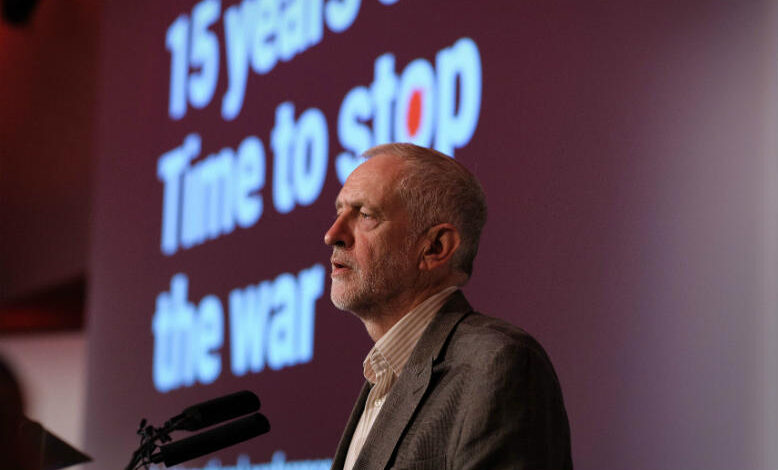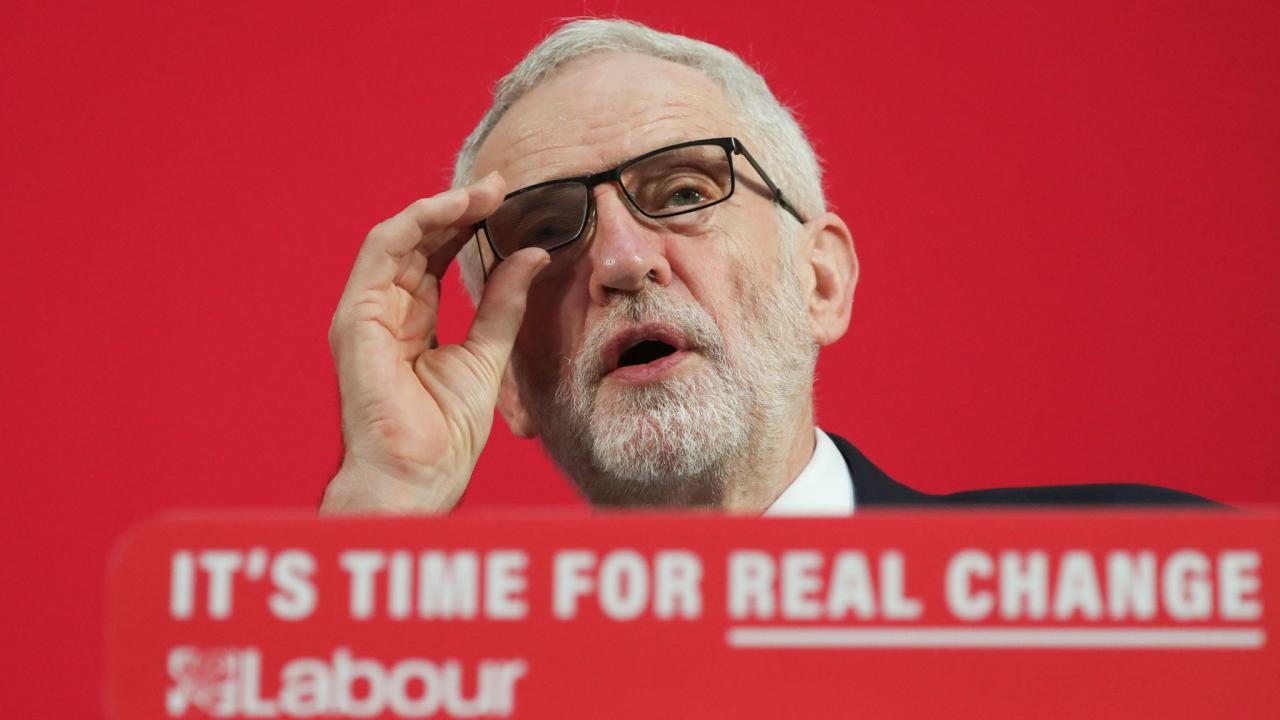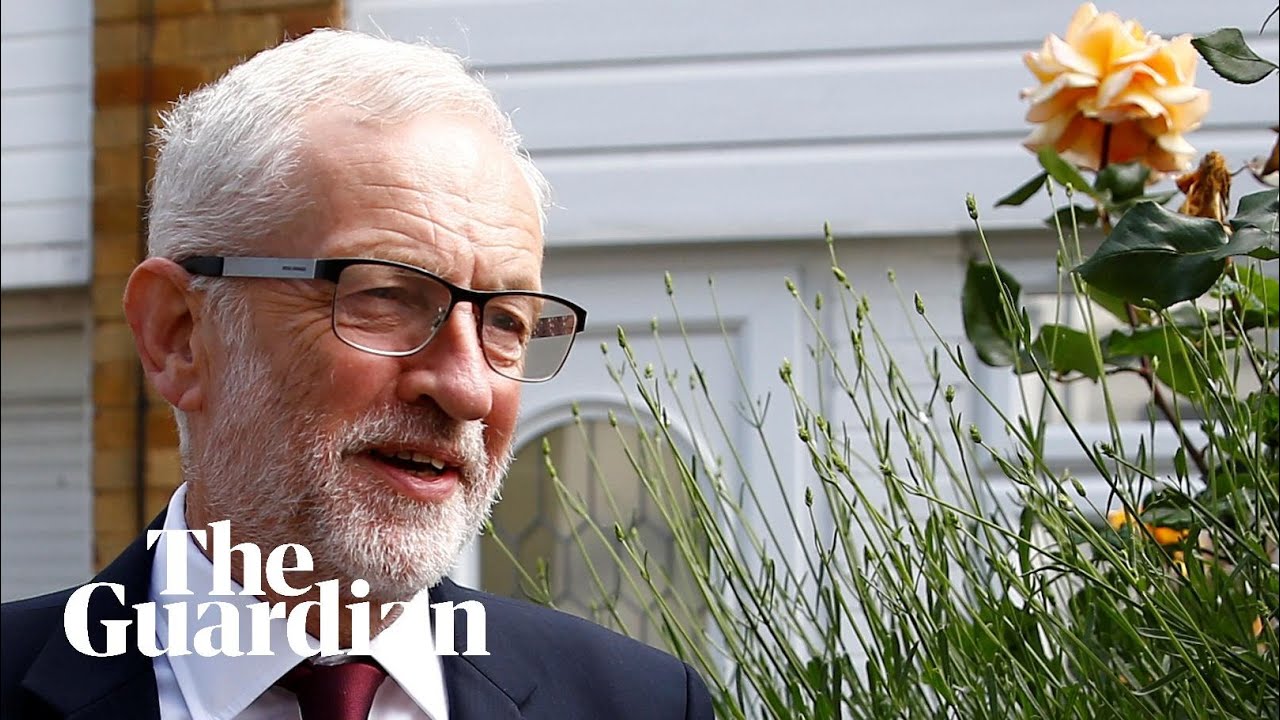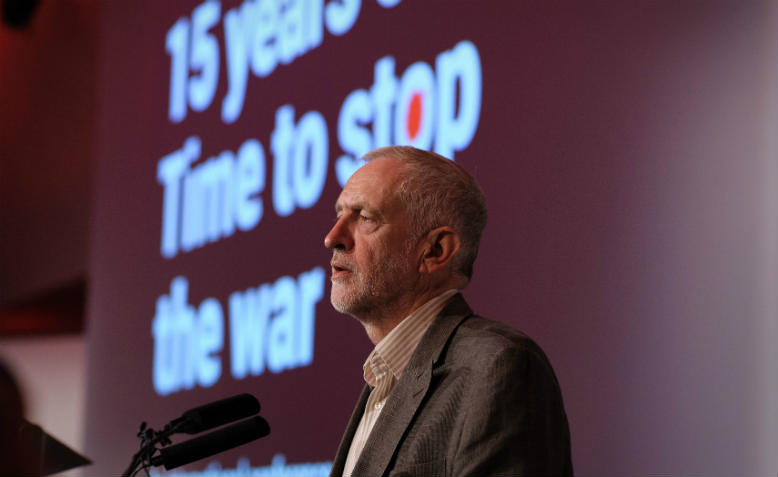
Jeremy Corbyn Wants More Nice Things Fewer Nasty Ones
Jeremy Corbyn Wants More Nice Things Fewer Nasty Ones: This phrase encapsulates a key aspect of his political career, a vision focused on social justice and economic equality. It’s a deceptively simple slogan, but one that hides a complex tapestry of policy proposals, media portrayals, and ultimately, a fascinating case study in political messaging and public perception.
We’ll delve into the specifics of his platform, examining both the “nice things” he championed and the “nasty things” he aimed to eradicate, exploring how his vision was received and its potential impact.
Corbyn’s political ideology, rooted in democratic socialism, prioritized social welfare, environmental protection, and peace. His “nice things” included proposals for nationalization of key industries, significant increases in public spending on healthcare and education, and ambitious climate change targets. Conversely, the “nasty things” he targeted included austerity measures, corporate greed, and what he perceived as systemic inequalities. Analyzing his policies requires considering their economic feasibility, social impact, and the often-polarized media coverage they received.
“Nasty Things” Targeted by Corbyn

Jeremy Corbyn’s political platform consistently highlighted what he perceived as deeply ingrained “nasty things” within British society, advocating for significant reforms to address them. These weren’t simply policy disagreements; Corbyn framed them as moral failings requiring systemic change to achieve a fairer, more just society. His approach differed significantly from his political opponents, who often prioritized economic growth or fiscal responsibility above social justice initiatives.
Austerity Measures and Their Impact on Vulnerable Groups
Corbyn vehemently opposed the austerity measures implemented by the Conservative government following the 2008 financial crisis. He argued these measures disproportionately harmed the most vulnerable segments of society, leading to increased poverty, inequality, and social unrest. His proposed alternative involved increased public spending on social programs and infrastructure projects, funded through increased taxation on corporations and high-income earners. This contrasted sharply with the Conservative approach, which emphasized fiscal discipline and reducing the national debt, even if it meant cuts to public services.
Jeremy Corbyn’s simple message – more nice things, fewer nasty ones – feels almost naive in the face of global complexities. Understanding those complexities is crucial, and reading about how Elias Khoury, in this insightful article elias khoury encapsulated the confusions of the middle east , illuminates the challenges facing even the most well-intentioned political agendas. Ultimately, Corbyn’s vision, while appealing, needs to grapple with the messy realities Khoury so expertly describes.
For example, Corbyn advocated for increased funding for the National Health Service (NHS), arguing that adequate healthcare was a fundamental human right, not a privilege determined by income. The Conservatives, conversely, focused on controlling NHS spending, leading to criticisms of underfunding and waiting lists.
Inequality and the Concentration of Wealth, Jeremy corbyn wants more nice things fewer nasty ones
Corbyn consistently criticized the growing wealth gap in Britain, arguing that the benefits of economic growth were not being shared equitably. He proposed policies aimed at redistributing wealth, including increased corporation tax, a crackdown on tax avoidance, and the nationalization of key industries like the railways. This contrasted with the Conservative approach, which generally favored lower taxes and deregulation, arguing that this would stimulate economic growth and create jobs.
Corbyn’s policies, however, aimed to mitigate the perceived injustice of concentrated wealth by investing in public services and providing a safety net for those struggling economically. For instance, his proposals for affordable housing aimed to address the housing crisis and reduce inequality in access to decent living conditions.
The Treatment of Migrants and Refugees
Corbyn’s stance on immigration and refugees differed significantly from his opponents. He consistently advocated for a more humane and welcoming approach, criticizing what he saw as hostile policies towards migrants and asylum seekers. He proposed reforms to the asylum system, emphasizing the need for fair and efficient processing of applications and increased support for refugees. His opponents, on the other hand, often focused on stricter border controls and tighter immigration policies.
Corbyn’s policies aimed to address the perceived injustice of treating vulnerable individuals with hostility and prejudice, promoting a more inclusive and welcoming society. He consistently challenged the dehumanizing rhetoric used to describe migrants and refugees, advocating for a more compassionate and understanding approach to immigration policy.
Public Perception and Media Representation: Jeremy Corbyn Wants More Nice Things Fewer Nasty Ones
The media’s portrayal of Jeremy Corbyn’s “more nice things, fewer nasty ones” approach was often highly critical, framing his policies as unrealistic, economically damaging, and even dangerous. This negative framing significantly influenced public perception, leading to a complex and often contradictory understanding of his political agenda. The language used to describe his policies frequently emphasized their perceived radicalism and lack of practicality.Media Portrayal of Corbyn’s ApproachThe dominant narrative in much of the mainstream media presented Corbyn’s policies as a threat to the established order.
His proposals for nationalization, increased social spending, and nuclear disarmament were often depicted as radical departures from conventional economic and foreign policy, lacking in detail and feasibility. This portrayal frequently emphasized potential negative consequences, such as increased national debt and a weakened national defense, often without sufficient counter-arguments or alternative perspectives. For example, his plans for nationalization were regularly presented as a return to inefficient state-controlled industries, ignoring the arguments for increased efficiency and public benefit that proponents of nationalization advanced.
The use of loaded language – such as “uncosted promises” or “reckless spending” – further solidified this negative framing.Public Opinion and Policy FramingPublic opinion towards Corbyn’s policies was highly divided. While his proposals resonated with a significant segment of the population, particularly younger voters and those on the left, he faced strong opposition from others who viewed his plans as unrealistic or even socialist.
The framing of his policies played a crucial role in shaping this public opinion. The constant repetition of negative narratives by many media outlets created a sense of uncertainty and doubt among undecided voters. Conversely, supporters found ways to interpret and communicate the message in a more positive light, emphasizing the social justice aspects of his agenda and highlighting the inadequacies of the existing system.
The impact of social media also became significant, offering alternative narratives and counter-arguments to the dominant media discourse.Language Used to Describe Corbyn’s AgendaThe language used to describe Corbyn’s agenda was often highly charged and emotive. Terms like “radical,” “extremist,” and “socialist” were frequently employed to portray him as an outsider and a threat to the status quo. This contrasted sharply with the language used to describe more centrist politicians, which tended to be more neutral and less emotionally loaded.
The use of such terms had a clear impact on public perception, shaping the way many people viewed his policies and his suitability for office. This often overlooked the nuanced nature of his proposals and the complexities of the issues he addressed.Hypothetical Media Campaign for More Effective MessagingA more effective media campaign for Corbyn could have focused on simpler, more relatable messaging, emphasizing the positive impacts of his policies on ordinary people.
Jeremy Corbyn’s “more nice things, fewer nasty ones” ideal feels distant when you consider the tragic reality highlighted in this article: canadian sikhs thought they were safe to protest against India then one of them was gunned down. It underscores how fragile peace can be, and how far we are from a world where such violence is unthinkable.
Corbyn’s vision, while laudable, seems a distant hope in the face of such brutal realities.
Instead of focusing on abstract economic theories, the campaign could have highlighted tangible benefits, such as improved access to healthcare, affordable housing, and better education. Visual storytelling, using human interest stories and case studies, could have made the policies more accessible and engaging. The campaign could also have proactively addressed concerns about cost and feasibility, offering detailed explanations and credible sources to counter negative narratives.
Jeremy Corbyn’s “more nice, fewer nasty” approach feels a world away from the potential chaos of a Trump presidency. It makes you wonder how businesses will navigate the complexities of dealing with him this time around, as explored in this insightful article: how will business deal with donald trump this time. The contrast highlights the vastly different approaches to leadership and the impact they have on economic stability; Corbyn’s vision, while idealistic, certainly offers a stark alternative to the unpredictable nature of Trump’s business dealings.
Finally, engaging diverse voices and perspectives – not just from party officials, but also from experts, community leaders, and ordinary citizens – could have helped create a more inclusive and persuasive message.
Economic Implications

Jeremy Corbyn’s proposed economic policies, centered around increased public spending and nationalization, sparked considerable debate regarding their potential economic impacts. Understanding these implications requires analyzing the underlying economic models and comparing them to alternative approaches, acknowledging both potential benefits and risks.The core of Corbyn’s economic platform involved significantly increased government spending on public services like healthcare, education, and infrastructure.
This was justified using Keynesian economic principles, arguing that government intervention could stimulate demand, create jobs, and ultimately boost economic growth, even if it resulted in increased national debt. This model contrasts sharply with austerity-focused approaches, which prioritize fiscal responsibility and debt reduction through spending cuts, often leading to reduced public services and potentially slower economic growth in the short-term.
The debate hinges on the differing views on the effectiveness of government spending as a driver of economic growth and the acceptable level of national debt.
Government Spending and Economic Growth
Proponents of Corbyn’s approach pointed to historical examples like the post-World War II reconstruction efforts in various countries, arguing that substantial government investment can lead to significant long-term economic benefits. The argument rests on the idea that increased public spending creates jobs, improves infrastructure, boosts productivity, and stimulates further private sector investment. Conversely, critics argued that such large-scale spending could lead to inflation, higher interest rates, and a crowding-out effect, where increased government borrowing makes it more expensive for businesses to invest.
They favored alternative models emphasizing fiscal prudence and market-led growth, suggesting that private sector investment is a more efficient engine for economic growth.
Hypothetical Scenario: Long-Term Economic Consequences
Imagine a scenario where Corbyn’s policies are fully implemented. Increased investment in renewable energy could create a new sector of green jobs, while improved public transport might reduce traffic congestion and boost productivity. However, if the increased government borrowing leads to higher inflation and interest rates, this could negatively impact private investment and consumer spending, potentially offsetting some of the benefits.
The success of this scenario depends heavily on factors like the efficiency of government spending, the responsiveness of the private sector, and the overall global economic environment. A poorly managed increase in government spending could lead to unsustainable debt levels and ultimately hinder long-term economic growth, while a well-managed approach could deliver significant benefits. The crucial element is effective management and targeted spending to maximize positive outcomes and minimize negative consequences.
This requires careful consideration of resource allocation, project management, and ongoing monitoring of economic indicators. Furthermore, successful implementation hinges on effective collaboration between government, the private sector, and the public.
Social Impact and Equity

Jeremy Corbyn’s political platform centered on a significant redistribution of wealth and power, aiming to create a more socially equitable and inclusive society. His proposals went beyond mere welfare provision; they sought to address the root causes of inequality and empower marginalized groups. This section examines the social impact of his proposed policies, focusing on their potential effects on various segments of the population and the broader societal fabric.Corbyn’s policies aimed to achieve social equity through a multifaceted approach.
This included significant increases in public spending on social programs, strengthening workers’ rights, and tackling issues of discrimination. The core belief underpinning these proposals was that a fairer distribution of resources and opportunities would lead to a more cohesive and just society.
Impact on Low-Income Households
Increased investment in social housing, alongside measures to control rent increases and strengthen tenant rights, would have directly benefited low-income families. This would have reduced the burden of housing costs, freeing up resources for other essential needs like food, healthcare, and education. Furthermore, proposals for a significant increase in the minimum wage and expansion of benefits programs would have provided a crucial safety net and improved living standards for many struggling families.
For example, a family relying on housing benefits and minimum wage income could have seen a substantial increase in disposable income, allowing them to afford better healthcare and potentially educational opportunities for their children.
Impact on Marginalized Communities
Corbyn’s policies explicitly targeted marginalized communities, including ethnic minorities, disabled individuals, and LGBTQ+ people. His proposals for anti-discrimination legislation, increased funding for community support services, and investment in inclusive education aimed to address systemic inequalities and promote equal opportunities. For instance, increased funding for specialized educational support could have significantly improved the life chances of children with disabilities, providing them with the resources they need to reach their full potential.
Similarly, targeted investment in community centers serving ethnic minority populations could have fostered social cohesion and empowered local leaders.
Potential Impact on Social Cohesion
The potential impact of Corbyn’s policies on social cohesion is complex and multifaceted. While some argue that increased social spending and redistribution of wealth could foster greater social harmony by reducing inequality and promoting a sense of shared prosperity, others express concern that such policies could exacerbate social divisions. A hypothetical scenario illustrating the positive impact might involve a community where improved access to resources and services, facilitated by Corbyn’s policies, leads to reduced crime rates and increased community participation.
Conversely, a negative scenario could involve increased resentment among some segments of the population who feel unfairly burdened by higher taxes or perceive a loss of social status. The reality would likely be a combination of both positive and negative effects, with the ultimate outcome depending on a variety of factors, including the effectiveness of implementation and the overall economic climate.
Case Study: Impact on the NHS
Increased funding for the National Health Service (NHS) was a cornerstone of Corbyn’s platform. A positive consequence could have been reduced waiting times for treatments, improved access to healthcare for marginalized communities, and a boost in morale among NHS staff. This would translate into better health outcomes for the population as a whole. A potential negative consequence, however, could have been strain on resources if the increased funding wasn’t accompanied by effective management and efficiency improvements.
This could lead to delays in certain areas despite the increased overall budget. The actual impact would depend on how effectively the increased funding was managed and allocated.
Ultimately, Jeremy Corbyn’s “more nice things, fewer nasty ones” approach remains a subject of intense debate. While his policies aimed for a more equitable and just society, their practical implementation and economic consequences remain open to interpretation. His legacy is one of challenging the status quo and advocating for a radical shift in political priorities, a legacy that continues to spark discussion and inspire reflection on the role of government in addressing social and economic inequality.





